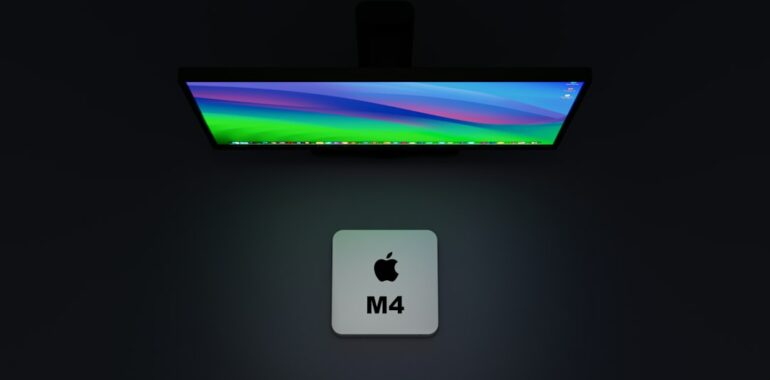Maximizing High-Performance Computing with Advanced GPU Clusters

Discover how GPU clusters enable high-performance computing by exploring their capabilities, key features, emerging trends, and implementation challenges.
Introduction to High-Performance Computing
In today’s data-driven world, High-Performance Computing (HPC) stands at the forefront of technological advancement. HPC enables organizations to process vast amounts of data, perform complex simulations, and drive innovations across various industries such as finance, healthcare, and artificial intelligence. Central to maximizing HPC is the deployment of advanced GPU clusters, which offer unparalleled computational power and efficiency.
Understanding GPU Clusters
What Are GPU Clusters?
GPU clusters are networks of interconnected Graphics Processing Units (GPUs) working in tandem to perform intensive computational tasks. Unlike traditional CPUs, which excel at handling sequential processing, GPUs are designed for parallel processing, making them ideal for tasks that require simultaneous data handling.
Architecture of GPU Clusters
At the core of a GPU cluster lies a distributed computing model. Multiple computing nodes, each equipped with one or more GPUs, are connected through high-speed networks like InfiniBand or Ethernet. This setup ensures rapid data exchange and efficient workload distribution. Additionally, a robust management system oversees job scheduling, load balancing, and fault tolerance, ensuring optimal performance and reliability.
Key Features of GPU Clusters
Parallel Processing Capabilities
The primary advantage of GPU clusters in HPC is their ability to execute multiple tasks concurrently. Each GPU contains thousands of cores capable of handling numerous threads simultaneously, drastically reducing processing times for large-scale data analysis, simulations, and real-time processing applications.
Scalability and Flexibility
GPU clusters are highly scalable, allowing organizations to expand their computational resources by simply adding more GPUs or nodes. This scalability ensures that HPC systems can grow in tandem with increasing computational demands, providing flexibility to adapt to diverse workload requirements.
Enhanced Inference Capabilities
Advanced GPU clusters, like those offered by NetMind AI Solutions, come with robust inference capabilities. These systems support various model API services, including image, text, audio, and video processing, enabling seamless integration and deployment of AI models across different applications.
Emerging Trends in GPU Clusters
Integration of Machine Learning Algorithms
One of the most significant trends in GPU clusters is the integration of machine learning algorithms directly into the infrastructure. This integration facilitates real-time data analysis and decision-making, enhancing the efficiency and responsiveness of HPC systems.
Hybrid CPU-GPU Clusters
Combining the strengths of both CPUs and GPUs, hybrid clusters offer a balanced approach to processing. While GPUs handle parallel tasks, CPUs manage sequential processing, optimizing overall system performance and versatility in handling various computational workloads.
Advancements in GPU Technology
With continuous innovations from leaders like NVIDIA, GPU clusters are becoming more powerful and energy-efficient. The introduction of GPUs like the NVIDIA H100 and H200 series exemplifies the advancements in processing speed and computational capabilities, further pushing the boundaries of what HPC can achieve.
Implementation Challenges and Solutions
Effective Workload Distribution
Distributing tasks efficiently across multiple GPUs is crucial for maximizing HPC performance. Advanced cluster management software and intelligent algorithms are being developed to ensure that workloads are balanced evenly, preventing bottlenecks and optimizing resource utilization.
Data Transfer and Synchronization
Managing data transfer between nodes and synchronizing computations can be challenging in GPU clusters. Technologies like Remote Direct Memory Access (RDMA) and high-speed networking solutions like InfiniBand are addressing these issues by enabling faster data exchanges and reducing latency.
Cost and Complexity
Implementing GPU clusters involves significant investment and technical expertise. However, platforms like NetMind AI Solutions mitigate these challenges by offering scalable, cost-effective GPU cloud infrastructure and comprehensive support services, making HPC accessible to organizations of all sizes.
NetMind AI Solutions: Empowering High-Performance Computing
Comprehensive AI Integration
NetMind AI Solutions provides a unique platform that accelerates AI project development through flexible integration options. With services like NetMind ParsePro for efficient data conversion and the Model Context Protocol (MCP) for enhanced communication between AI models, NetMind ensures seamless integration of AI capabilities into existing infrastructures.
Scalable GPU Cloud Infrastructure
NetMind’s remote GPU clusters offer scalable performance on demand, allowing organizations to access high-performance GPUs at competitive prices. This scalability is essential for managing varying computational demands without incurring prohibitive costs.
Funding and Support for Innovation
Through the NetMind Elevate Program, startups can receive monthly credits up to $100,000, providing essential resources to fuel innovation. This support aligns with the growing trend of venture capital investment in tech-driven startups, promoting the adoption of advanced HPC solutions.
Versatile Applications Across Industries
NetMind’s AI-powered tools and services are tailored to diverse industries, including finance, healthcare, insurance, and social media. Whether it’s improving risk management, accelerating claim processing, or enhancing data analysis, NetMind’s solutions empower businesses to leverage HPC for operational excellence.
The Future of High-Performance Computing with GPU Clusters
Advancements in GPU Technology
As GPU technology continues to evolve, future GPU clusters will offer even greater computational power and efficiency. Innovations like the upcoming NVIDIA H200 GPU are set to further enhance HPC capabilities, enabling more complex and larger-scale AI and machine learning models.
Increased Adoption Across Sectors
The demand for HPC is expected to surge as organizations increasingly adopt digital solutions to improve efficiencies and gain a competitive edge. GPU clusters will play a pivotal role in this transformation, driving advancements in areas such as autonomous vehicles, natural language processing, and predictive analytics.
Enhanced Energy Efficiency
Future GPU clusters will focus on improving energy efficiency, a critical factor in large-scale computing environments. Enhanced energy-efficient technologies will reduce operational costs and minimize the environmental impact of HPC systems.
Conclusion
High-Performance Computing is revolutionizing the way organizations handle complex computational tasks, and advanced GPU clusters are at the heart of this transformation. By leveraging the parallel processing power, scalability, and flexibility of GPU clusters, businesses can achieve unprecedented levels of efficiency and innovation. Platforms like NetMind AI Solutions are further empowering enterprises to maximize their HPC potential through comprehensive AI integration, scalable infrastructure, and robust support services. As technology continues to advance, the synergy between GPU clusters and HPC will unlock new possibilities, driving progress across various industries and fostering a future of limitless computational capabilities.
Ready to elevate your AI projects and harness the full potential of high-performance computing? Visit NetMind AI Solutions today!




